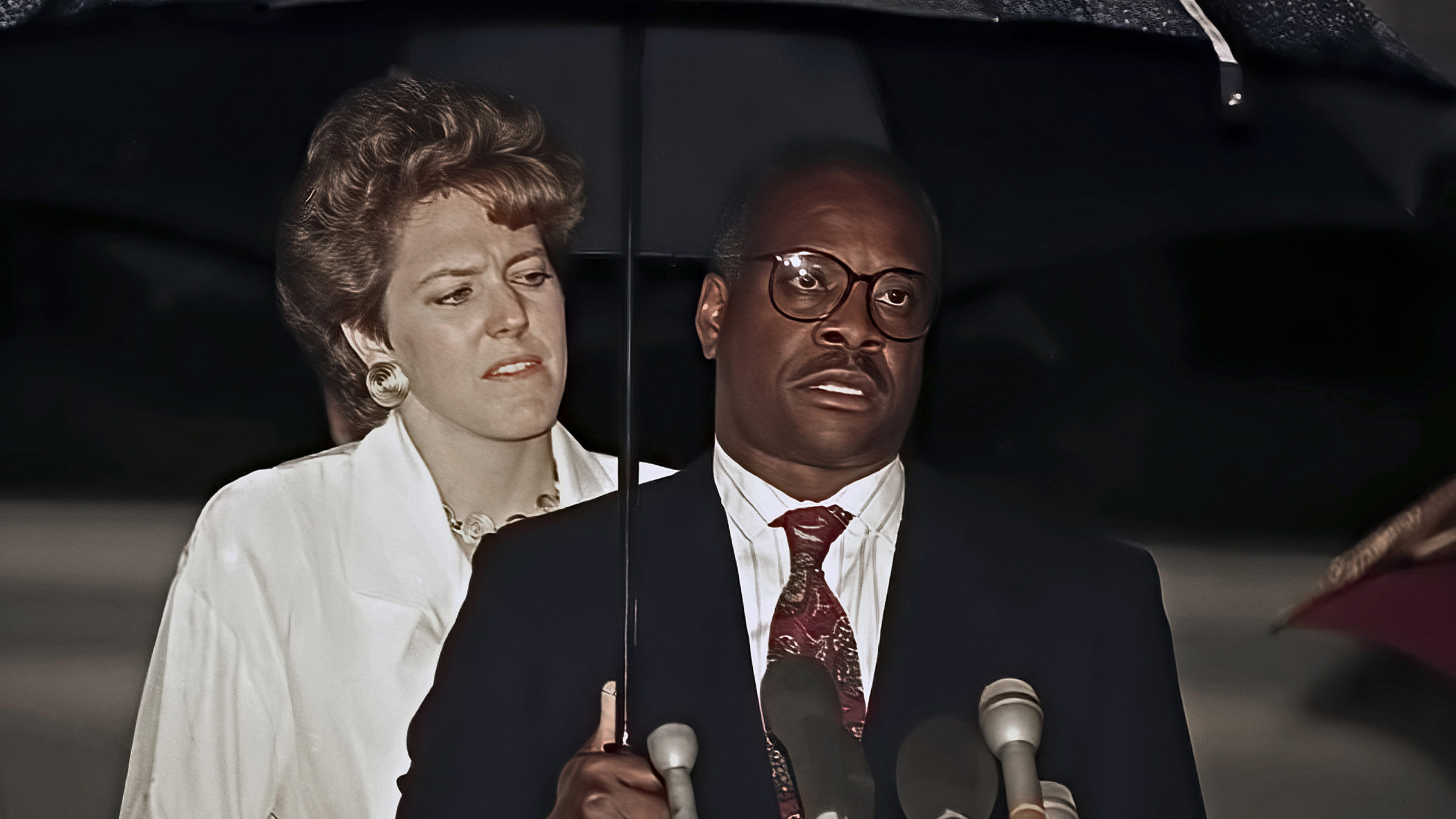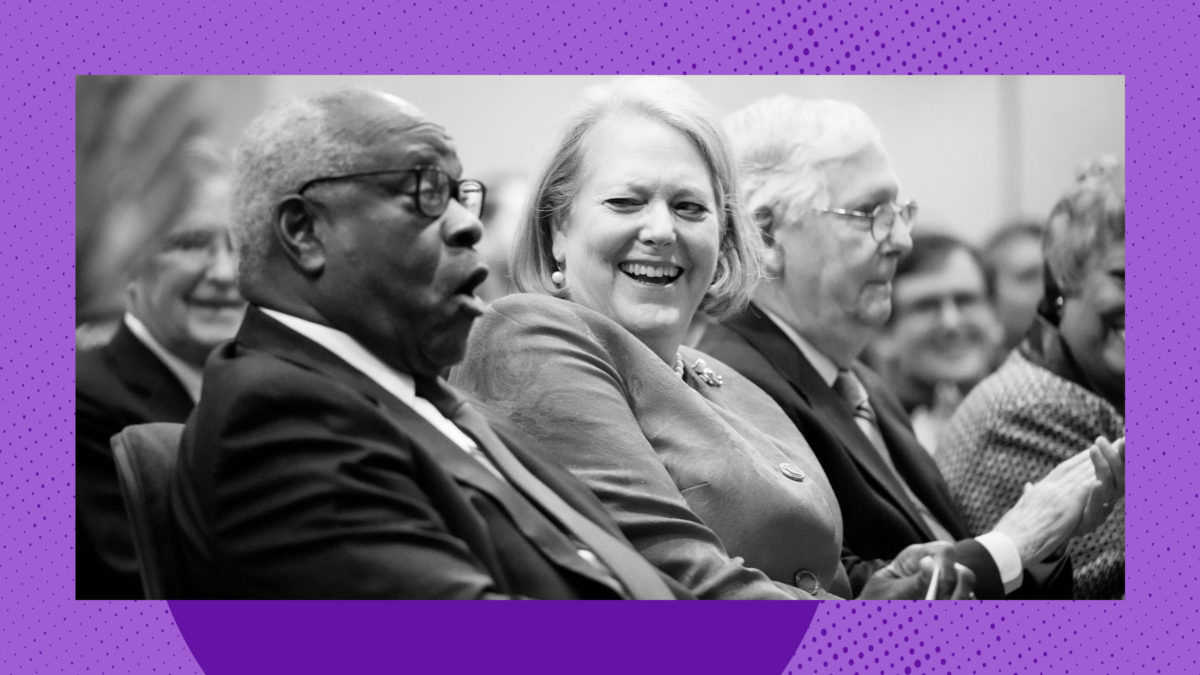Early this year, The New Yorker published an article chronicling the recent political activities of Ginni Thomas, Supreme Court Justice Clarence Thomas’s wife. A few weeks later, The New York Times published a similar piece. Some of the reporting was unsurprising. Ginni Thomas holds fringe right-wing views, and is the type of the person who rants about the deep state and uses the term “transexual fascists.” To those who have even casually followed her career, this was not news—Ginni has long had politics roughly adjacent to the dumbest person in your Facebook feed.
More alarming was the revelation that Ginni Thomas runs a consulting outfit that has often found itself with a political and financial stake in cases pending before the Supreme Court. Further, she has worked in partnership with conservative organizations and operatives who have cases on the Court’s docket. The result is a clear tension between Ginni’s work and Justice Thomas’s purported impartiality in several recent high-profile cases.
Despite the clear conflicts of interest on display, Thomas has consistently refused to recuse himself from cases implicating Ginni’s work. Most recently, Thomas was the sole dissenter when, last month, the Court rejected former President Donald Trump’s request to shield his records from a congressional committee investigating January 6th. Ginni’s connection to the matter was extensive. She had spoken out against the committee, signing an open letter calling it an “overtly partisan political persecution that brings disrespect to our country’s rule of law.” She also has a close working relationship with Mark Meadows, a former Trump Chief of Staff who filed an amicus brief in the case.
Questions about potential conflicts of interest have long swirled around Justice Thomas. Ginni was soliciting résumés for people seeking positions in the Bush administration when the Court decided Bush v. Gore and effectively handed the 2000 presidential election to Republican George W. Bush. When the Court heard NFIB v. Sebelius, a case about the constitutionality of the Affordable Care Act, Ginni was the head of an organization calling for the law’s repeal. Both incidents resulted in calls for Thomas to recuse himself, all of which he ignored.
But the issue goes deeper than just matters of recusal. As The New Yorker reported, Thomas failed to disclose payments made to Ginni by at least one right-wing organization that had filed an amicus brief in Trump v. Hawaii, the 2017 case concerning Trump’s Muslim ban. In recently unearthed emails between Ginni and people in the Florida Governor (and likely presidential hopeful) Ron DeSantis administration, Ginni stated that “my husband has been in contact with [DeSantis] too on various things of late.” In other words, the Thomases are openly engaging in political action while one of them sits on the Supreme Court.
Even more jarring than the obvious impropriety of Thomas’s conduct is the fact that, at least for now, it’s not clear anything can be done about it. While law requires that federal judges recuse themselves from cases where their impartiality is in question, recusals on the Supreme Court are left entirely to the justices’ own discretion: there is no oversight from Congress or anyone else. The rules governing justices’ financial disclosures are both vague and sparse. The Supreme Court is also exempt from the Code of Conduct that governs other federal judges, and are held to standards of transparency far below that of a politician. In other words, the idea that the Court is a revered and unassailable body above the fray of politics isn’t just an artifact of American political culture; it’s enshrined into law.

Clarence and Virginia Thomas conduct a press conference outside their home after his Senate Judiciary Committee vote in 1991 (Photo by Mark Reinstein/Corbis via Getty Images)
Meaningful Supreme Court reforms like Court expansion are not exactly at the top of the Democratic agenda right now. This fragile coalition of 50 Senate Democrats can’t convince Joe Manchin to help feed hungry children, let alone upend one of the branches of government: As a result, the Democratic Party’s posture toward the Court has ranged from tepid to pathetic. The Court issues a horrifying, reactionary ruling, and in response the party shoots out a press release expressing their sincere disappointment. When the Court gave its blessing to SB8, Texas’ plainly unconstitutional anti-abortion law, President Joe Biden put out a statement noting that he was “very concerned.” Instead of treating the Court as a political enemy, Democrats have, it seems, resigned themselves to a decade or more of being run over by the conservative wing of the Court, praying they’ll be in charge the next time there’s a vacant seat.
But the exposure of Thomas’s corruption presents an opportunity. First, legislation that increases transparency into the justices’ financial and political interests might actually have legs: Last year, legislation to improve financial transparency among federal judges passed the House 422-4, and the Senate unanimously passed a related bill requiring judges to disclose stock trades in February. These bills fall well short of what is needed, but there is apparently at least some appetite among lawmakers to keep judicial corruption in check.
Second, and more importantly, it is time that the Court’s claim to legitimacy be publicly questioned. Progressives have begun to make the argument that the Court is not a venerable, nonpartisan deliberative body, but an ideological institution inseparable from politics. If they want to win that argument, they need to make a case more robust than “the Court has too many conservatives.” The Court’s conservatives are not simply of a particular ideological bent; they are thoroughly enmeshed with the Republican Party. As Mayer reported, they dine privately with Republican presidents. They give closed-door speeches alongside Republican leadership. And one of them is living in a house perhaps literally built by undisclosed right-wing money.
Many liberals have wrung their hands about whether reform efforts might erode the Court’s legitimacy. That gets the calculus almost exactly backwards: If you are even nominally on the left, you should have no interest in maintaining the legitimacy of reactionary institutions. Reform is only possible if the Court’s public standing is undermined. The myth of the Court’s exceptionalism is a self-fulfilling prophecy. Legal media and academics assume the justices to be acting in good faith, which in turn leads to a regime of near-zero oversight. Without real oversight, their misconduct becomes invisible, and the presumption of good faith is maintained.
If a sustained campaign of public and political pressure against the Court is going to succeed, it will need to make the case that the Court is not only flawed, but irredeemable in its current form; not only that the interpretation of law is a political process, but that the justices themselves are political creatures exercising political power.
The immediate benefits of transparency legislation are obvious. A regime of extensive and mandatory financial disclosures, meaningful conflict of interest rules, and oversight of political activities would help lay bare the political and financial interests of the Court’s members. But even if legislation fails, public scrutiny of the justices will likely increase, as people learn about why this legislation is necessary in the first place. Any refusal by Republicans to allow for transparency will only serve to further weaken their self-serving rhetoric about the Court’s nonpartisan nature.
The justices have been living in the shadows for too long, and we should find out how they fare in the light. In the short term, maybe Clarence Thomas takes an ethics CLE. In the long term, it might help make the case that the Court needs to be rebuilt from the ground up.

